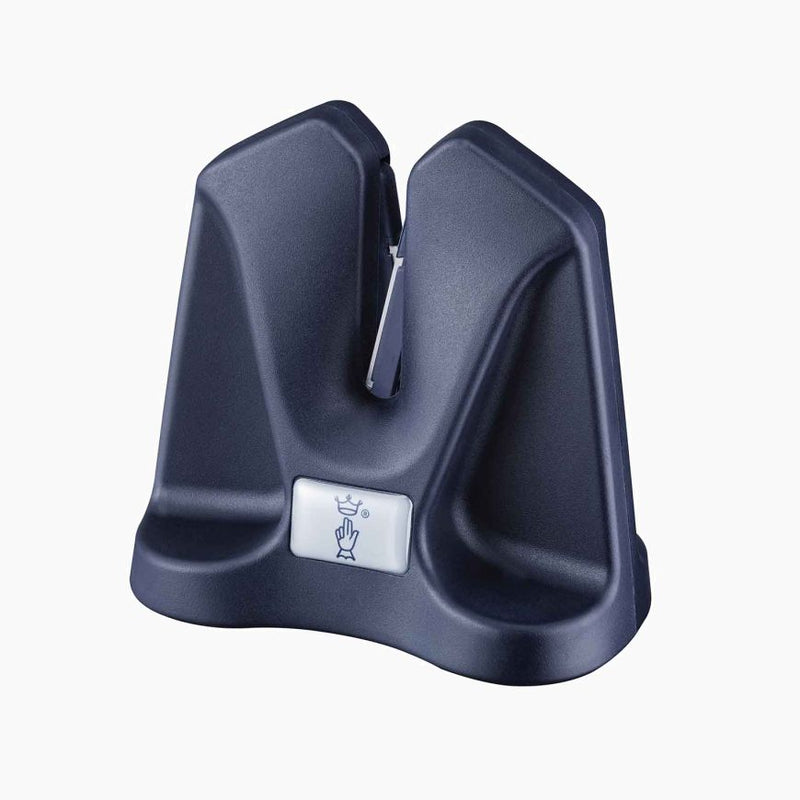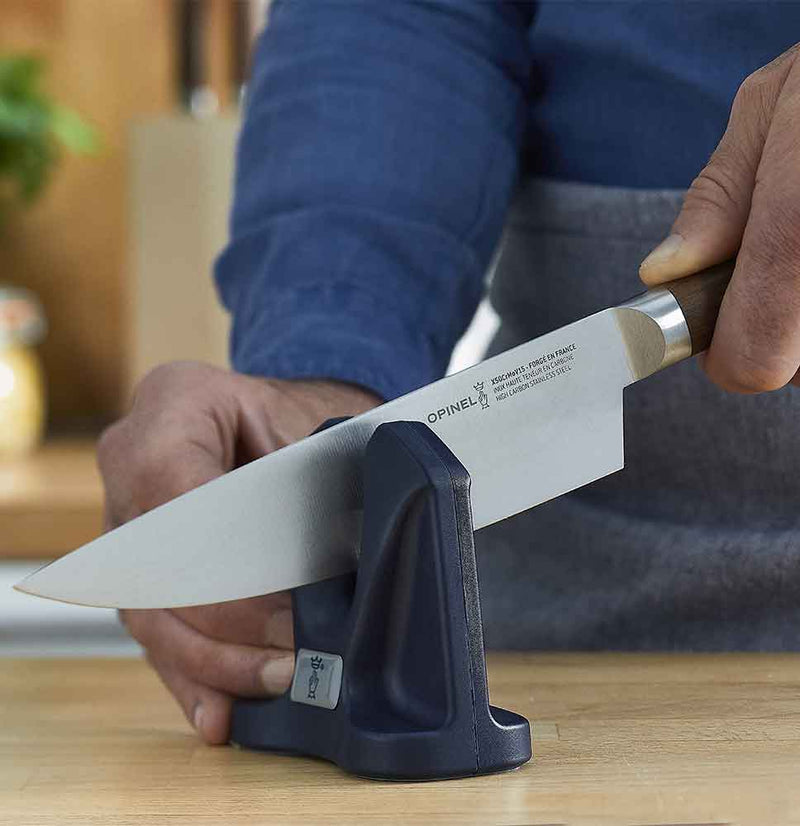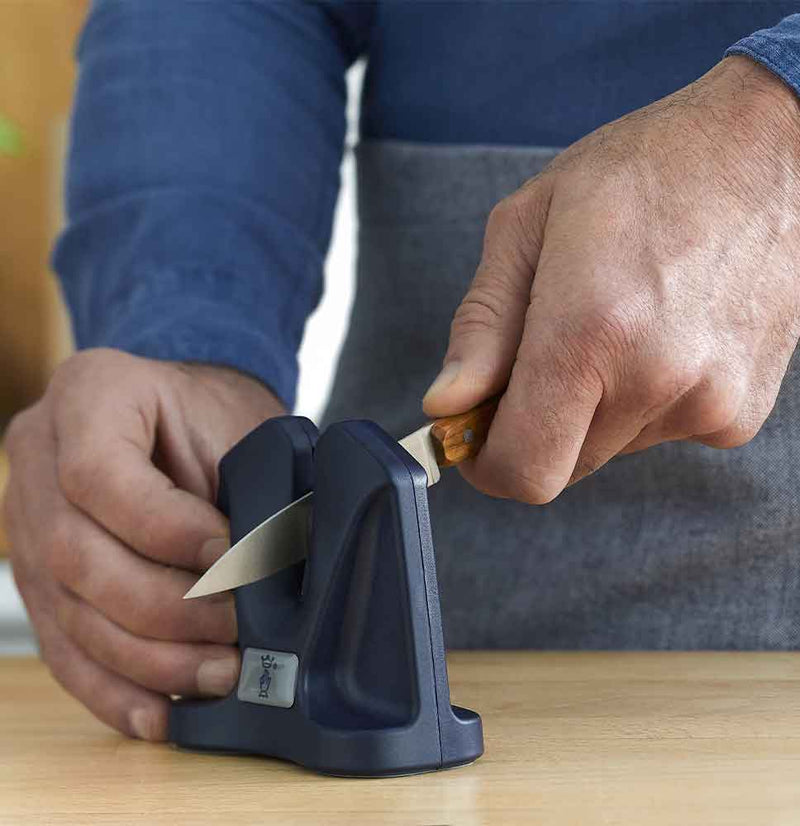Everything you need to know
Care & Maintenance
All you need to know to take care of your Opinel
Sharpening
Sharpening at a 20 degree angle is recommended for all pocket knives & kitchen knives.
We do not recommend sharpening serrated blades or micro-serrated blades. Due to the sharp, recessed edges of a serrated knife, your Opinel will stay sharp for years to come
TIPS
How to sharpen with a stone?
1. Lightly wet or oil the stone.
2. Hold the knife at a 20 degree angle. Start with the base of the blade at the top of the stone, and as you move along the stone, the blade should also move, so that you end at the tip of the blade.
3. A burr (build up) will form on the opposite side of the blade. Remove this by performing the same movement on the burr side, with very light pressure.
4. To finish off, lightly pass both sides over the stone, twice.
Notes:A wide-angle will thicken the cutting edge: it will be more resistant but less sharp. A small angle will thin the cutting edge: it will be less resistant but sharper.
TIPS
How to sharpen with a steel rod?
A honing steel rod will not sharpen a knife, it is meant to return the blade to its original condition by smoothing the edge.
1. Using light pressure, align your blade against the rod at approximately a 15-20 degree angle. Slide the blade across the surface of the steel from the heel of the blade to the tip - you want to make sure you cover the whole edge.
2.Repeat this action on both sides of the knife 3 to 4 times.
If this does not realign the edge, you may need to use a diamond steel or sharpening stone to create a new edge.
If sharpening isn't really your thing, our Manual Sharpener does the job for you!



Opinel Manual Sharpener
The Opinel Manual Sharpener is a compact and portable tool specifically designed for sharpening knives.
It is equipped with carbide plates that effectively restore and rejuvenate dull edges. The sharpener features a self-adjusting angle that provides a 15-degree bevel on each side of the blade, ensuring precision in sharpening. Additionally, the silicone padded base secures the blade firmly in place during the sharpening process.
This tool is quick and easy to use, making it suitable for sharpening both kitchen knives and pocket knives with a single, straightforward motion.
This content type will accept rich text to help with adding styles and links to additional pages or content. Use this to add supplementary information to help your buyers.
You can use product metafields to assign content to this tab that is unique to an individual product. Use tabs to highlight unique features, sizing information, or other sales information.
The Handle
Do NOT put any wood-handled knives (pocket or kitchen) in the dishwasher.Wood is a living material, sensitive to its environment. It can swell or dry up, causing difficulties in opening the blade and warping over time.
Virobloc® Locking Ring
Invented in 1954 by Opinel founder’s son, Marcel, the Virobloc® Locking Ring is featured on all Opinel pocket knives from No.06 to No.13, and some Opinel tools. The locking ring will secure the blade in an open or closed position. Easily twist the locking ring to release the blade. The locking ring may be too tight or too loose due to the wood handle expanding or contracting. There is an easy way to fix this problem if it occurs using bow opening pliers.
How to tighten the Virobloc® Locking Ring:
1. With the knife closed, insert hte closed tip of the pliers into the locking ring gap and open the pliers slightly to remove the rotating outer ring.
2. Clean the inner fixed ring and inner wall of the outer ring with a clean cloth.
3. Tighten the outer ring that was removed by using your hands rto gently squeexe the ring together, making it ever so slightly smaller.
4. Lightly lubrictae the fixed interior ring with oil.
5. Once lubricated, the outer ring can pop back on the knife by placing the locking ring upside down on a flat, hard surface and pushing the closed knife downward into the ring again.
If the Virobloc® Locking Ring is still loose, repeat steps 1/3/5 until it is sufficiently tightened.
How to loosen the Virobloc® Locking Ring:
1. With the knife closed, insert the closed tip of pliers into the locking ring gap and open the pliers slightly to place pressure on the locking ring opening and expand it a little.
Do not place too much pressure to open the ring to avoid loosening the Virobloc® Locking Ring too much.
2. If there is debris under the locking ring, take the outer ring off to clean the inner collar by using the same method with pliers.
3. Using the pliers, reassemble the rotating locking outer ring back onto the inner fixed ring.
The Blade
Carbon steel has a low resistance to corrosion. It will likely discolor (patina) and/or rust. DO NOT leave Carbon steel blades wet or damp. Hand dry immediately after each use. Humidity may cause corrosion: store your carbon blade in a dry environment. Avoid cutting acidic foods and oil your blade to prevent a patina. Do not worry if a patina has started building on your blade, as it helps prevent rust. Despite the discoloration of a patina, many Opinel fans seek this unique feature of our carbon steel blades.
For easy maintenance, we recommend our stainless steel blade options, as they are better suited for outdoor or food use.
How to restore a carbon blade:
*for blades with rust, or to lessen patina.
1. With a scrubbing sponge and a powdered scrubbing compound, scrub lengthwise along the blade. You can also use a combination of baking soda and vinegar for a more natural method.
2. If that doesn't work, use a new scrubbing sponge with a powdered scrubbing compound.
3. If that doesn’t work, you can consider using a metal polish and a low grit sandpaper (for rust) or a higher grit (for water stains or patina).
These processes will preserve the blade finish and lessen patina,but they will not prevent rust or reactiveness to acidic foods.
Limited Lifetime Warranty
Little has changed since 1890. Rooted in history and a commitment to craftsmanship, we're still following in Joseph Opinel's footsteps nearly 130 years later. From our home in the Alps, we make tools designed to stand the test of time. We value the quaility of our knives and tools, and offer a limited lifetime warranty for all Opinel products. In the event of a manufacturer's defect or workmanship, Opinel will exchange the products affected.













